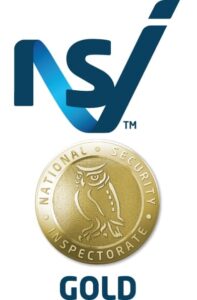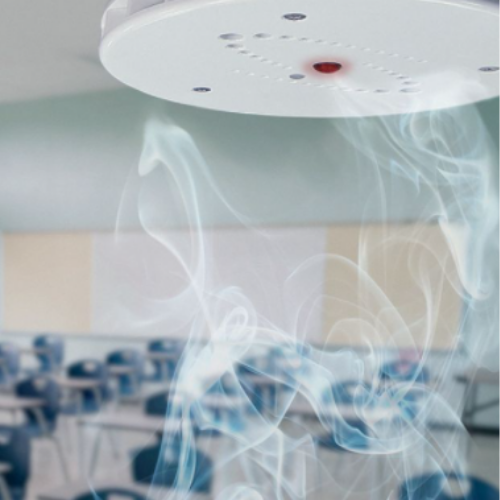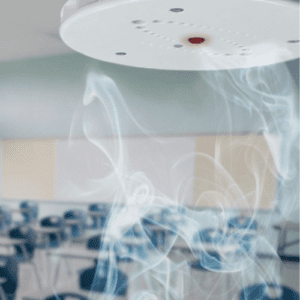The Prime Minister Rishi Sunak admitted in an interview with Sky News that more and more young people under 18 are vaping, and said that the government wants to put a stop to it.
In a speech earlier this month to the Policy Exchange thinktank Health Minister Neil O’Brien announced the government would provide £3 million of new funding to create a specialised national ‘flying squad’ to enforce the rules on vaping and tackle illicit vapes and underage sales. The minister said this would help to improve training and enforcement capacity in Trading Standards so that staff can undertake specific projects such as test purchasing in convenience stores and vape shops.
This national programme, O’Brien said, would help share knowledge and intelligence across regional networks, including on organised crime gangs. He also said the government would produce guidance to help build regulatory compliance and there would be more action to remove illegal products from shelves and at the UK borders.
Additionally, the Department of Health and Social Care’s Office for Health Improvement and Disparities has launched a consultation calling for evidence “to identify opportunities to reduce the number of children (people aged under 18) accessing and using vape products, while ensuring they are still easily available as a quit aid for adult smokers.”
The government was responding to the growing concerns about illegal vape products and underage vaping as well as by specific demands public health charity, Action on Smoking and Health (ASH), local government and trading standards organisations for action. ASH stated in February youth vaping had grown rapidly and the fastest growth has been in the new single use or disposable e-cigarettes which have come on to the market in the last few years and are cheap and widely available. These, ASH said, are now the most used product among young people who currently vape, up more than 7-fold from 7% in 2020 and 8% in 2021, to 52% in 2022. ASH recommended a series of measures the government could take that it believes would reduce the appeal of vapes to children:
- Taxing disposable vapes which are the cheapest and most popular vape for children.
- Stricter regulation of advertising and promotion, particularly at point of sale in shops
- Stricter regulation of packaging, labelling and product design features (e.g. prohibiting cartoon characters; product names associated with sweets; and design features such as “light up” vapes.
It also recommended reducing underage access to vapes by:
- better funding for enforcement
- putting vapes behind the counter
- mandatory age verification in shops for anyone looking under 25
- prohibiting free distribution (currently legal to anyone of any age)
Meanwhile the Chartered Trading Standards Institute (CTSI) welcomed demands by the Local Government Association (LGA) for a change in the law around the selling of vaping products, which are similar to those from ASH. Specifically, the LGA said they wanted to see:
- Vapes to be in plain packaging and kept out-of-sight behind the counter
- Mandatory age-of-sale signage on vaping products – it is currently voluntary
- A ban on free samples of vaping products being given out to people of any age
Veronica McGinley, CTSI Lead Officer for Age-restricted sales, said: “The current regime of unrestricted displays and flavours has led to bright, colourful and attractive displays of products which are clearly aimed at the youth market and advertised as a desirable lifestyle product rather than a smoking cessation aid.
Couple this with the explosion onto the market of single-use vapes which are cheap and easy to use, and we have created the perfect storm, leading to Trading Standards Officers across the country fielding complaints from parents about children as young as 13 accessing vapes.”
Ofsted identifies problems with vaping
Separately the school inspectorate, Ofsted, is calling out schools when it has witnessed clear problems with young people vaping and associated poor behaviour. Publicity surrounding these reports can potentially damage the reputation of schools and colleges. Ofsted identified vaping as among the problems with at least one further education college in the south of England and a secondary school in northern England that has led to them receiving ratings of inadequate and requires improvement respectively.
Vaping in both the educational establishments was combined with other problems of poor behaviour, lack of respect for staff and sometimes evidence of students skipping lessons. The challenges that can be exacerbated by vaping in schools, but which can be tackled if decisive action is taken, was demonstrated by our customer, Baxter College in Kidderminster.
ASH guidance published to support schools
Last September, at the beginning of the academic year, ASH published guidance for schools to help them manage the vaping problem. This is available alongside more extensive ASH youth vaping resources for local authorities, schools and parents. This includes:
- Resources developed by Smokefree Sheffield to help schools
- National data on youth attitudes and behaviour
- An explanation of the laws on vaping and how to report any breaches
- A myth-buster
It was developed with advice from teachers with expertise in safeguarding and health education, and is designed to support the development and implementation of evidence-based school policies. The guidance is particularly aimed at designated safeguarding leads and PSHE teachers.
Local councils such as York City, Kirklees council in west Yorkshire, and Bracknell Forest council in Berkshire, reported that the Department of Health and Social Care requested that schools review their vaping policies at the beginning of the academic year. Schools were advised to pay particular attention to the guidance from ASH.
Criticism of vaping products marketed to appeal to young people
The ASH guidance came as the UK’s health advisers regard vaping as a tool to reduce smoking among adults and the government has backed this approach. In his independent review by Dr Javed Khan OBE into the government’s ambition to make England smokefree by 2030, which was published in August 2022, he recommended promoting vaping.
The report stated that, “The government must embrace the promotion of vaping as an effective tool to help people to quit smoking tobacco. We know vapes are not a ‘silver bullet’ nor are they totally risk-free, but the alternative is far worse.”
In his speech to the Policy Exchange thinktank Health Minister Neil O’Brien accepted the Khan recommendations and said the government would work with councils and others to offer a million smokers across England a free vaping starter kit. Smokers who join this scheme, which will run initially over the next 2 years, must join on one condition – they commit to quit smoking with support. This is being dubbed as a national ‘swap to stop’ scheme which the government said is the the first of its kind in the world.
Media reporting has increasingly highlighted the harms to young people who vape, when they have not smoked; the way it is promoted is likely to appeal to young people and shown that money from traditional tobacco companies is often funding the growth in the vaping market. There is also evidence that young people could be more attracted to vaping because of social media that they are also increasingly exposed to. A study by the University of Queensland in Australia published in 2021 found that a majority (63%) of the videos uploaded on the social media platform TikTok between January 2019 to November 2020 portrayed vaping in a positive light. These particular videos were collectively viewed over 1.1 billion times. The effect of social media on young people’s decision to vape is one of the issues the government has mentioned in its call for evidence on youth vaping.
The promotion of vaping to appeal to young people was also commented on recently by the Chief Medical Officer, Chris Whitty, speaking to MPs on the Health and Social Care Committee in February when he gave evidence for their inquiry into Prevention in health and social care. He said: “Marketing vaping, an addictive product which has unknown consequences on developing minds, to children is utterly unacceptable and yet is happening. We know it is happening as, although from a low base, the rates of vaping have doubled in the past couple of years.”
He identified disposable vapes like elf bars, and the range of colours and flavours available as examples of products that are in reality being marketed at children.
Illegal Vapes cause added concern
The CTSI has also highlighted that shops selling to underage users have also been found to be selling vapes that were not legally compliant.
Research conducted by the Chartered Trading Standards Institute (CTSI) found that illegal vapes are the products Trading Standards professionals are most concerned about on the UK’s high streets. A CTSI statement on vaping said Trading Standards has seen a rise in illicit sales of vaping products by specialist vape shops, convenience stores and corner shops over the past year, with more than 1.4 tonnes of illegal vapes seized in the last six months of 2022 in the North East of England alone.
Vapes and e-cigarettes are regulated by the Medicines and Healthcare products Regulatory Agency. The regulations require that they have tanks to a capacity of no more than 2ml; a nicotine strength of no more than 20mg/ml; and their labels display manufacturer details and health warnings. Refill containers are restricted to a maximum capacity of 10ml, certain ingredients including colourings, caffeine and taurine are banned, and nicotine-containing products or their packaging must be child-resistant and tamper-evident.
However, many of the devices seized by Trading Standards teams breach these rules, and there are concerns that some may be designed specifically to appeal to children and young people, with packaging and flavours copying popular confectionery brands such as Skittles.
Surveys show the growth of vaping among young people
The latest research published by NHS Digital, Smoking, Drinking and Drug Use among Young People in England, showed that e-cigarette use has risen to 9%, up from 6% in 2018 in secondary school pupils in England in years 7 to 11. The survey of pupils mainly aged between 11 and 15 conducted between September 2021 and February 2022 also found that 1 in 5 (21%) of 15-year-old girls were classified as current e-cigarette users.
Meanwhile surveys by local councils have shown the level of vaping in their own areas. York city council surveyed 4,267 children and young people from across 37 schools between October 2021 and January 2022, as part of its York Schools Survey. This showed that 19% of secondary and sixth form pupils had used an e-cigarette and 10% had used conventional cigarettes. The council is now offering free support to young people to help them to stop vaping.
Commenting on the survey, Daniel Furniss, Deputy Headteacher, Care, Support and Communication, at Archbishop Holgate’s School, said: “I know that many schools, including ours, are educating pupils on the dangers of vaping and smoking, however, the ease of buying e-cigs is not helping the issue, nor is the pretty way in which they are packaged.”
“We urge pupils across the city to take up this free support and for parents and carers to talk to their children, to help raise awareness about the health risks and dangers.”
In Devon, a survey last year, found that 2% of Year 6 pupils; 10% of Year 8 pupils; and 30% of Year 10 pupils have tried e-cigarettes.
Amy Grashoff, Headteacher at Newton Abbot College, said ““The government’s promotion of vapes as an alternative to smoking is understandable to an adult audience, however, the positive marketing around this misleads young people.”
Reminder that if you have never smoked you should not vape
The core message within the ASH guidance for schools, which is backed by the government, is that vaping is not for children and that while it can help people quit smoking, if you don’t smoke don’t vape. However, the guidance also states that most children who try vaping, have also tried smoking, and vaping is far less harmful than smoking.
Deborah Arnott, Chief Executive of ASH, said: “The new vaping guidance for schools recognises growing concerns about children vaping. It is designed as a guide to empower schools with the information they need to develop their policies.
“We understand that it can be difficult for schools to know what to do about vaping, particularly when online promotion on social media sites like TikTok, is fuelling its use.
“A whole school approach is needed to address both smoking and vaping, making it part of the curriculum, highlighting the risks, and arming children with the facts so that they can make informed choices. It’s important to remember that the harms to health are significantly greater from smoking.”
ASH said the guidance was welcomed by education leads, including Diane Buckle, Assistant Director of Education with North Tyneside Council. She said: “North Tyneside Council is keen to do all we can to help our schools address the growing use of vapes by their pupils. It is very timely and just what’s needed. We will be circulating this guidance to all our schools and encouraging them to use it to ensure that they address youth vaping appropriately.”
What can schools do about the vaping problem?
The guidance from ASH is designed to help schools design better policies to deal with both smoking and vaping by their students. The need for staff training on this issue is clear and indicates that the school needs to consider how they deal with pupils depending on their age and school level. The guidance also reminds schools of the health implications of vaping and asks them to consider if the school nurse has been informed.
One of the first questions staff should ask children under 18 caught vaping is where the e-cigarettes were obtained. ASH states the that the main source of supply is through shops, but it is illegal to sell to under 18s or to buy vapes for a child. If a shop is named then they can be reported to trading standards through the Citizen Advice Bureau.
The actual act of vaping by children under 18 is not illegal and therefore the punishment should be proportionate, according to ASH, and children should not be excluded from school for vaping or smoking unless there is other behaviour which justifies this. Teachers, ASH said, should be aware that vapes could be used to exploit the most vulnerable children, as is the case with other age restricted products such as tobacco and alcohol. The message therefore for schools is that the approach to vaping must be based on the wider policies on the health and welfare of their children and how they address behaviour issues.
Understanding the scale of the problem can help schools manage it
While schools may be hoping that government action to enforce the law may help to curb underage vaping in the future it is important for them to understand the scale of the problem they currently have. This can help schools to provide support to students and deal with troublemakers if this is appropriate. Smart sensors, mainly developed by US manufacturers, can discreetly detect vaping and provide notifications to school staff so that they can track the problem and deal with the pupils involved.
The HALO Smart Sensor, manufactured by IPVideo Corporation, a subsidiary of Advance Convergence Group, stands out because it can easily be integrated with other security systems to provide alerts and control systems for a building’s heating, ventilation and air conditioning, unlike its rivals. There is an option to connect to its cloud-based management system, which does incur annual payments as is the case for other smart sensors. This is recommended if you have multiple devices but it is not a requirement, while it is for some other options.
The HALO can detect tetrahydrocannabinol (THC) which is found in cannabis and also pick up when vaping has been masked by spraying another substance in that area. While other smart sensors have features beyond vape detection the HALO has the largest numbers of gases and particles it can detect which can help schools with additional issues, such as air quality and ventilation. The HALO also detects abnormal noise levels and recognised keywords that are used for calls for help, which could help to pick up bullying and fighting between pupils. These features could also be useful for managing vaping when it is associated with intimidation or other poor behaviour by pupils. Our customer, Matthew Carpenter at Baxter College, said the aggression detection feature helped improve behaviour at the secondary school.
There is no doubt UK schools, like their counterparts in the US, Australia and New Zealand, have found they need to tackle the issue of growing numbers of their pupils who vape and the risk it poses to them and others. Considering the ASH guidance and using smart sensors to understand the scale of their issue in their school are important steps to addressing vaping in a serious way.
If your school is considering monitoring vaping and tackling this issue, Ecl-ips can support you. We have selected the HALO Smart Sensor as our recommended vape detector because of its flexibility with other technology and the breadth of its sensor capabilities. To find out more about how we helped Baxter College read our blog, or contact us.



